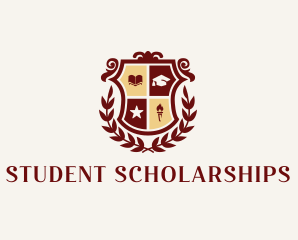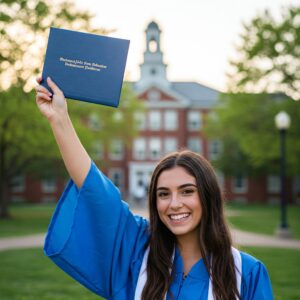A Gateway for High School Innovators
For high school seniors with disabilities, the dream of a tech career can feel distant amid financial barriers and societal misconceptions. The Microsoft Disability Scholarship bridges this gap, offering more than just financial aid—it’s a launchpad for future innovators to thrive in STEM fields. Established by Microsoft to foster diversity and inclusion in technology, this renewable $5,000 scholarship empowers students with disabilities to pursue degrees in computer science, engineering, or related disciplines while accessing mentorship, internships, and a global community of peers.
In this guide, we’ll explore how the Microsoft Disability Scholarship works, break down eligibility criteria, share strategies to craft a standout application, and highlight the unparalleled benefits that set this award apart. Let’s unlock your potential to lead in tech!
What Is the Microsoft Disability Scholarship?
The Microsoft Disability Scholarship is part of Microsoft’s broader commitment to building an inclusive workforce that reflects the diversity of its users. Awarded annually, it supports high school seniors with disabilities who plan to pursue STEM degrees (e.g., computer science, data science, electrical engineering) at accredited four-year U.S. colleges. Key features include:
- Financial Support: 5,000peryear,renewableforuptofouryears(20,000 total).
- Mentorship: Guidance from Microsoft employees and access to skill-building workshops.
- Career Opportunities: Priority consideration for Microsoft internships and the Microsoft Neurodiversity Hiring Program.
- Community: Joining a network of 500+ alumni driving accessibility innovations.
Since 2005, the program has invested over $5 million in students who are reshaping tech—from AI accessibility tools to adaptive gaming hardware.
Why Apply? Benefits Beyond the Scholarship
The Microsoft Disability Scholarship is a catalyst for long-term success in tech:
1. Financial Freedom
- $20,000 Total: Renewable awards ease tuition burdens, allowing focus on academics and innovation.
- No Restrictions: Funds can cover tuition, assistive tech, housing, or other educational expenses.
2. Mentorship & Professional Growth
- Microsoft Mentors: Pairing with engineers and product managers for career advice.
- Skill-Building Workshops: Coding bootcamps, resume reviews, and interview prep sessions.
3. Internship Pathways
- Priority access to Microsoft’s internship programs, including roles in Azure, Xbox Accessibility, and AI for Good.
4. Advocacy & Visibility
- Recognition on Microsoft’s Diversity Blog and at virtual award ceremonies.
- Opportunities to present projects at Microsoft events like Ability Summit.
5. Lifelong Community
- Connect with alumni through Microsoft’s Disability Employee Resource Group (ERG).
Eligibility Criteria: Who Qualifies?
To apply, students must meet the following requirements:
- Disability Status: Have a documented disability (e.g., physical, sensory, learning, mental health, or chronic illness).
- Academic Focus: Plan to major in computer science, computer engineering, data science, or a related STEM field.
- Enrollment: Entering a four-year undergraduate program at an accredited U.S. college in the fall after graduation.
- Academic Performance: Maintain a minimum 3.0 GPA (weighted or unweighted).
- Leadership & Passion: Demonstrate commitment to tech innovation and disability advocacy.
How to Apply: Your Step-by-Step Roadmap
The application emphasizes potential over perfection. Follow this roadmap to stand out:
1. Prepare Early (Junior Year)
- Build Your Portfolio: Engage in coding projects, hackathons, or STEM clubs.
- Document Your Journey: Track challenges overcome, leadership roles, and community impact.
2. Gather Materials (Fall of Senior Year)
- Proof of Disability: Documentation from a healthcare provider or school (e.g., IEP/504 plan).
- Transcripts: Highlighting GPA and STEM coursework.
- Resume: Emphasize tech projects, internships, and advocacy work.
3. Craft Compelling Essays
- Essay 1 (500 words): “Describe how you’ve overcome adversity related to your disability and how it shapes your tech aspirations.”
- Essay 2 (300 words): “Explain how you plan to use technology to empower people with disabilities.”
Pro Tip: Weave in personal stories. Example:
“Designing a voice-activated app for my sister with cerebral palsy ignited my passion for accessible tech.”
4. Secure Recommendations
- Choose recommenders who can speak to your resilience and tech aptitude (e.g., CS teacher, internship supervisor).
5. Submit by the Deadline (March 15, 2025)
- Application Portal: Microsoft Scholarship Hub
- Required Materials:
- Completed application form.
- Two essays.
- Transcripts.
- Two recommendation letters.
- Proof of disability.
6. Prepare for Interviews (April–May 2025)
- Finalists may be invited for virtual interviews focusing on problem-solving and passion for tech.
Tips for Crafting a Standout Application
1. Frame Disability as Innovation
- Highlight how your lived experience drives creative solutions.
Example: “My dyslexia led me to develop a text-to-speech plugin now used by 1,000+ students.”
2. Showcase Hands-On Tech Experience
- Detail projects, GitHub contributions, or robotics competitions.
- Quantify impact: “Led a team to build a wheelchair-accessible VR game prototype.”
3. Align with Microsoft’s Mission
- Reference Microsoft’s accessibility initiatives (e.g., Seeing AI, Xbox Adaptive Controller) in essays.
4. Highlight Advocacy
- Describe leadership in disability communities (e.g., mentoring, organizing accessibility workshops).
5. Leverage Microsoft Resources
- Attend pre-application webinars for essay feedback and Q&A sessions.
Success Stories: Microsoft Scholars Leading Change
- Samantha Lee: 2018 scholar developed an AI-powered sign language translator app during her MIT studies; now a UX researcher at Microsoft.
- Carlos Mendez: Created a low-cost Braille e-reader as a Stanford freshman; awarded a patent with Microsoft’s support.
- Priya Desai: Founded a nonprofit teaching coding to students with visual impairments post-scholarship.
FAQs: Your Questions Answered
Q: Can I apply if I’m pursuing a non-engineering STEM major (e.g., biology)?
A: No—the scholarship is limited to tech-related fields like CS, data science, or electrical engineering.
Q: Is the scholarship open to international students?
A: No. Applicants must attend a U.S. high school and plan to enroll in a U.S. college.
Q: What if my GPA is slightly below 3.0?
A: Exceptions are rare. Focus on improving grades before applying.
Q: Can past winners renew the scholarship?
A: Yes! Maintain a 3.0 GPA and submit renewal documentation annually.
Alternative Scholarships for Tech Students with Disabilities
If ineligible, consider:
- Google Lime Scholarship: $10,000 for students in CS or related fields.
- Autism Speaks Tekkie Talents Program: Mentorship and grants for autistic students.
- AAHD Frederick J. Krause Scholarship: For health/tech innovation in disability communities.
Why This Scholarship Matters
Only 3.5% of tech workers openly identify as having a disability, despite 15% of the global population living with one. Microsoft’s scholarship addresses this gap by empowering students to lead with their unique perspectives. As 2021 Scholar Jamal Carter notes, “This award taught me my disability isn’t a weakness—it’s my superpower in building tech for everyone.”









